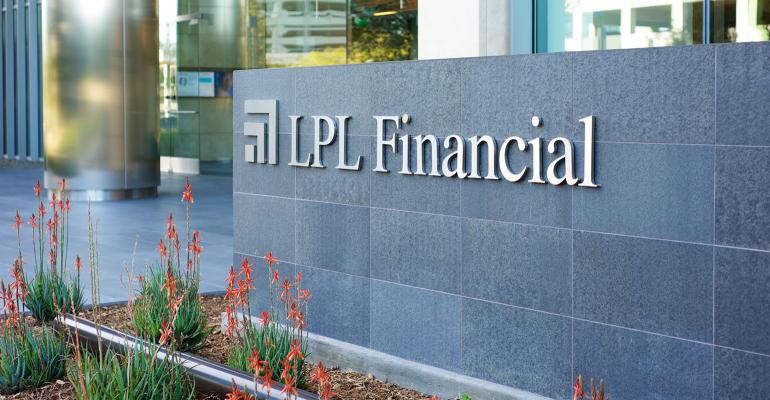LPL Financial announced its first foray into the W-2 affiliation model when it closed on its acquisition of Allen & Co., a Lakeland, Fla.-based broker/dealer and RIA with 30 advisors and $3 billion in assets under management, last year. Since then, the firm has been building out the business channel, and this week the firm officially opened it to the market with the opening of an office space in Boston, where it is currently recruiting.
The publicly traded independent b/d outlined the details of the offering, which includes payout ranging from 50% to 70%, depending on an advisor’s production; no platform, transaction or administrative fees; access to a client service associate; employee benefits; Class A office space; and a technology stack. The model also allows for advisors to have their own brand and website.
The model features a payout structure that is 35% to 40% higher than traditional employee firms, where payouts range from 35% to 47%. It starts at 50% payout for advisors with annual production between $350,000 and $424,999, and it scales up quickly from there. Advisors with production of $5 million or more receive 70%.
“The fact that the grid very quickly grows above the typical 50% payout is unique,” said Louis Diamond, executive vice president and senior consultant at Diamond Consultants.
In addition, the payout is guaranteed for the life of the seven-year promissory note. Most other traditional firms can change the payout grid at any time.
“I’m a huge fan of the fact that it’ll lock in the compensation plan for the life of the deal,” Diamond said. “That’s awesome because that’s what most advisors are fearful of is, comp plan changes and moving to salary and bonus. So I think it remedies that.”
Further, LPL will pay these advisors on every client they serve, regardless of size. Many other employee firms don’t pay on households below $250,000 or have reduced grids for those smaller households.
“In my experience, most advisors carry between 20 and 35% of their households being less than $250,000, so that usually equates to between 10 and 15% of an advisor's production,” said Rich Steinmeier, managing director of business development at LPL. “At some firms they're getting zero payout on that or significantly reduced grid. We don't make a distinction about which clients get paid on, which clients you shouldn't get paid on.”
And unlike other traditional employee firms, the advisor owns the client relationship.
“We do not own their clients, and that is materially different than all other providers,” said Rich Steinmeier, managing director of business development at LPL. “And the implication of that is one, obviously they're free to move their businesses and not worry that the firm that they're partnered with is going to try to destroy their life's work.”
Another implication of that is, if an advisor in this model were to sell their practice, LPL believes they would be taxed at capital gains for the sale, versus being taxed at ordinary income at other employee firms, because they have a salable asset that they control—the book of business. Steinmeier said advisors would benefit a lot with this tax treatment.
“That’s huge,” Diamond said. “I’ve never seen an employee model that allows that. I’m sure it’s because they’re saying advisors own their equity. But if it’s actually true that that’s the case and it’s defensible to the IRS, that’s a huge, huge differentiator.”
LPL also believes it has a differentiated approach to real estate; it has partnered with commercial real estate company IWG to take down variable office space in Class A buildings in major markets. If necessary, the firm can expand or contract those leases depending on advisor growth. That allows the firm to take on little to no occupancy risk, Steinmeier said.
In June, LPL posted a job opening on LinkedIn, seeking a senior vice president to run its employee channel alongside Peter Vincent, who has been building out the channel. The firm is currently actively interviewing candidates for that role, but it has not yet hired anyone.




